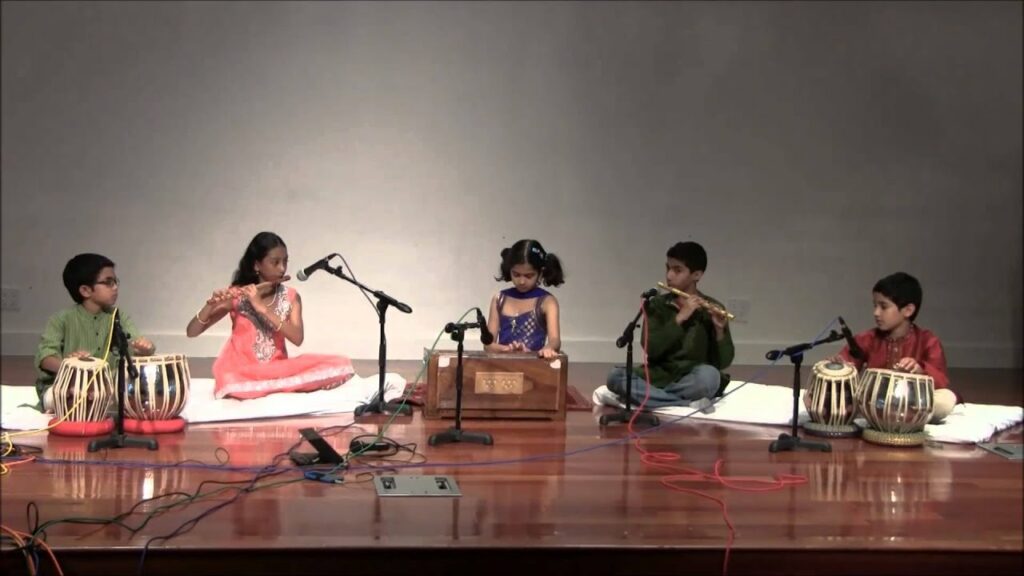A cup of music, a gallon of life- Music and Children – Score Short Reads
Indian Classical music, in both the Hindustani and Carnatic forms, has always been associated with austerity and complexity. The image that comes to mind is usually that of a middle-aged artist with decades of experience and research sitting on a stage with equally experienced accompanists, exploring the complex layers of a Raaga.
Even the audiences who appreciate classical music are learned, or at least initiated, adults. When we see children in these audiences, we see mini-adults, children who are musically gifted or those who have, through the aegis of their guru and parents, accepted the austere life of sadhana and riyaaz.
When we see these children precisely finding the ‘sum’ in a Hindustani concert, or mouthing famous Kriti lyrics in a Carnatic concert, the typical sight is that of the child being accompanied by a very enthusiastic parent who wishes one day to see their child on stage.
While this is a wonderful phenomenon and so unique to our classical music culture, it does behoove us to look into the relevance of classical music for the lay child. The child who does not belong to a musical family or who does not have any special aptitude for classical music, a child who may not be naturally inclined to learn this form. Should such a child be excluded from reaping the huge benefits of learning classical music? Certainly not.
Classical music training has very deep benefits to offer every human being on this planet. Especially children. Learning classical music can make children more emotionally aware, calm and more musically inclined in general. It strengthens concentration, improves breathing and fosters an appreciation of beauty and art.
So how do we then make classical music accessible to any child? By making it fun. By making it relatable. Classical music needs to become demystified enough for the average parent to look at it as accessible, and for every child to think of it as fun. It has to be packaged in a way that makes it an easy choice for any child.
One of the ways to do this is to use stories to teach. Make Swaras into characters and musical melodies into a story. Bring music visually alive through pictures so that the child is drawn into music with ease. Weave musical quizzes and games to keep children engaged. Jokes and laughter need not be so removed from music education either. Music instructors need to be taught the skill of relating to children without judgement or prejudice.
Classical music has to become a natural and easy choice for playtime. While this approach may be antithetical to earlier practices of the strict gurukul approach, it might be an importantl way forward to carry forward our musical heritage.
We are at a cultural precipice now. The number of people from the younger generations interested in learning, preserving and taking forward Indian classical music is dwindling. Even audiences are now scarce. As a music community we need to wake up and see the need to create interest in our art among children, and engender in them an appreciation for our rich musical heritage. The way is through entering their magical world of laughter fun and frolic. This is the only way music will remain alive and breathing in the younger generation.








